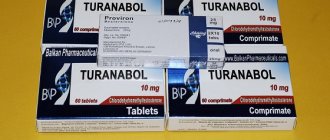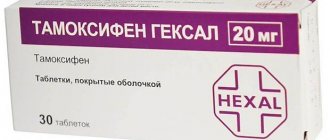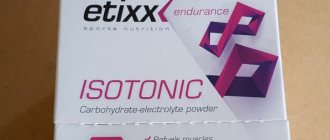Diuretics specifically act on the kidneys and accelerate the excretion of urine from the body. The action of most diuretics is associated with the ability to inhibit the reabsorption of electrolytes in the kidneys (renal tubules). An increase in the release of electrolytes is accompanied by the release of a corresponding amount of fluid.
Back in the 19th century, a mercury drug appeared, which was widely used to treat syphilis. This drug turned out to be weak in relation to the disease. But doctors noticed its diuretic effect. Soon, mercury compounds were replaced by less toxic diuretics. Subsequently, modification of the structure of diuretics led to the creation of more effective diuretics.
What are diuretics used for?
Diuretics are mainly used for:
- reducing edema in heart and vascular failure;
- for kidney diseases;
- reducing high blood pressure;
- removal of toxins in case of poisoning.
Edema can be a consequence of various diseases of the heart, vascular and urinary systems. This pathology is associated with sodium retention in the body. Diuretics remove excess sodium from the body, thereby reducing swelling.
With high blood pressure, excess sodium affects the tone of the vascular muscles, which contract and narrow. Diuretics, used as antihypertensives, flush sodium from the body and allow blood vessels to dilate, which leads to a decrease in blood pressure.
The kidneys remove some of the toxic substances during poisoning. In order to speed up this process, diuretics are used. In practical medicine, this method is called “forced diuresis.” Patients are first injected intravenously with a large volume of solutions, and then injected with a highly effective diuretic drug, which quickly expels toxins from the body along with the fluid.
Potassium-sparing
Potassium-sparing diuretics reduce upper (systolic) blood pressure, reduce swelling, enhance the effect of other drugs and retain potassium in the body. Undesirable effects often appear, as with the use of hormonal drugs. Excessive potassium levels can cause cardiac arrest or muscle paralysis. For kidney failure and diabetes mellitus, this group of drugs is not suitable. It is necessary to adjust the dosage individually, and also observe a nephrologist and cardiologist. Effective medicines - “Veroshpiron”, “Aldactone”.
The first is a potassium-sparing diuretic; it has a pronounced and long-lasting diuretic effect. The active ingredient of this medicine is spironolactone (adrenal hormone). This substance prevents the retention of water and sodium in the renal tubules. The drug "Veroshpiron" does not significantly affect blood circulation in the kidneys, reduces the acidity of urine and reduces the excretion of potassium from the body. The diuretic effect helps normalize blood pressure.
Types of diuretics
For various pathologies, certain diuretic drugs are prescribed, which have different mechanisms of action.
Classification of diuretics:
- Drugs affecting the function of the renal tubular epithelium: Hydrochlorothiazide, Cyclomethiazide, Bendroflumethioside, Methyclothiazide, Chlorthalidone, Metolazone, Clopamide, Indapamide, Flurosemide, Bumetamide, Torsemide, Ethacrynic acid, Amiloride, Triamterene.
- Potassium-sparing drugs - Spironolactone (Veroshpiron). They are mineralocorticoid receptor antagonists.
- Osmotic diuretics: Monitol.
Based on the leaching of sodium from the body, diuretics are divided into:
- Highly effective, removing more than 15% sodium.
- Moderate effectiveness, removing 10% sodium.
- Ineffective, removing 5% sodium.
Features of the classification of diuretics
Ideally, the classification should take into account all aspects of their impact. However, at present it does not exist, since diuretics differ fundamentally in their chemical structure. That is why they are too different from each other in terms of duration of influence on the human body and mechanism.
It is not without reason that experts forbid patients to choose diuretics on their own: each type of diuretic has specific effects, its own side effects and contraindications. The use of powerful compounds can cause active removal of potassium from the body or accumulation of the element, severe headaches, dehydration, and hypertensive crisis. An overdose of strong loop diuretics when self-medicated can end very sadly.
So, let's move on to the classification of diuretics.
How do diuretics work?
The effect of diuretics can be considered using the example of their pharmacodynamic effects. The decrease in blood pressure is associated with two mechanisms: a decrease in sodium levels and an effect on blood vessels. Similarly, arterial hypertension can be stopped by reducing the volume of fluid content and maintaining vascular tone for a long time.
A decrease in myocardial oxygen demand when using diuretics is associated with relaxation of myocardial cells, decreased platelet aggregation, improved microcirculation in the kidneys, and reduced load on the left ventricle of the heart. Some diuretics (Manit) can not only increase fluid excretion, but also increase the osmolar pressure of the interstitial fluid. Due to the properties of diuretics to relax the smooth muscles of the bronchi, arteries, and bile ducts, the drugs exhibit an antispasmodic effect.
How important is blood?
It is not so important what percentage of liquid our body contains of the total mass. The condition of the bloodstream is much more important:
- Circulating blood volume.
- Rheological parameters of liquid in vessels.
- The content of formed elements in it.
- Integrity of the vascular wall.
Thanks to blood, nutrition and oxygen delivery to all tissues and organs are carried out. This is well known from the school cycle, but few people thought that in fact breathing is only an integral part of a more complex process:
- A person inhales air, it enters the respiratory sections of the bronchi. In the smallest segments.
- The blood flowing through the capillaries is enriched in these sections with oxygen obtained from this very air.
- Thanks to the work of the heart, blood is distributed throughout the body.
- Red blood cells, which carry oxygen, release its molecules to cells and tissues.
Stopping breathing, a person will die in a few minutes. After cardiac arrest, death will not be long in coming either. This is obvious and not in doubt. And the fact that blood pathologies can lead to no less disastrous results
, are usually avoided.
Indications for the use of diuretics
The main indications for prescribing diuretics are arterial hypertension, especially in the elderly. Diuretics are prescribed for sodium retention in the body. These conditions include: chronic cardiac and renal failure, ascites. It is recommended to take thiazides for osteoporosis. Potassium-sparing drugs are prescribed for congenital Liddle syndrome (sodium retention and excretion of large amounts of potassium). Diuretics that affect kidney function (Diacarb, Acetamoc, Diluran) are prescribed to reduce intraocular pressure in glaucoma, cirrhosis, and cardiac edema.
Thiazide-like diuretics are prescribed for the prevention and treatment of arterial hypertension. In small doses they have a mild effect on patients with a moderate increase in blood pressure. Prophylactic doses of these drugs have been shown to reduce the risk of stroke. It is not recommended to take thiazides continuously at higher doses, as hypokalemia may occur. To prevent potassium loss, thiazides can be combined with potassium-sparing diuretics.
When treating with diuretics, a distinction is made between active and maintenance therapy. During active therapy, moderate doses of potent diuretics (Furosemide) are prescribed; during maintenance therapy, constant use of diuretics is prescribed.
Contraindications to the use of diuretics
In patients with hypokalemia and decompensated liver cirrhosis, the use of diuretics is contraindicated. Diuretics are not prescribed to patients with intolerance to certain sulfonamide derivatives (antibacterial and hypoglycemic drugs).
Diuretics are contraindicated in patients with respiratory failure, acute renal and respiratory failure. Thiazide group drugs (Hydrochlorothiazide, Cyclomethiazide, Bendroflumethioside, Methyclothiazide) are not prescribed for diabetes mellitus, as the patient’s blood sugar may rise sharply.
Relative contraindications for the prescription of diuretics are ventricular arrhythmias. For patients taking cardiac glycosides and lithium salts, diuretics are prescribed with great caution. Osmotic diuretics are not used for cardiac failure.
Thiazide-like and thiazide medications for hypertension
In the past, hypertension was typically treated with loop diuretics. But now they are used more for the treatment of kidney, heart failure and edema. The research results showed good effectiveness of thiazide-type drugs. They improve the prognosis of hypertension. However, the reduction in the risk of coronary complications when using these drugs was not as pronounced in comparison with the expected results. The use of thiazide drugs increases the likelihood of developing arrhythmias. In some patients, even sudden arrhythmic death is possible. Disorders of carbohydrate and lipid metabolism, as well as hyperuricemia, are also common. The course of atherosclerosis and diabetes mellitus may worsen. Medications in this group are often combined with potassium-sparing diuretics.
Side effects and possible health risks
Diuretic drugs from the thiazide group can lead to concentrations of uric acid in the blood. Therefore, patients suffering from gout may experience worsening and exacerbation of the disease. Medications from the moderately effective group (Hypothiazide, Hydrochlorothiazide) may have undesirable consequences. If the dosage is incorrect or intolerance, the patient may experience drowsiness, dry mouth, weakness, nausea, possible diarrhea, and headache. An imbalance of ions leads to arrhythmia, muscle weakness, spasms in skeletal muscles, increased blood sugar levels, allergies, and decreased libido in men.
Side effects of Furosemide are increased urination, dry mouth, nausea, dizziness, decreased levels of calcium, magnesium, and potassium. If ion exchange is disrupted, the level of calcium, glucose, and uric acid increases. All this leads to hearing loss, skin rashes, and paresthesia. The diuretic Uregit can negatively affect hearing and is irritating.
Side effects of aldosterone antagonists may include: diarrhea, vomiting, headache, convulsions, gynecomastia, skin rashes. If prescribed incorrectly, women experience menstrual irregularities, hirsutism, and men experience impotence. Osmotic diuretics, if not adequately treated for heart failure, can lead to an increase in plasma volume and increased stress on the heart. This can lead to pulmonary edema in heart failure.
List of effective osmotic diuretics
Osmotic diuretics are less likely to cause adverse reactions than loop diuretics. Along with excess fluid, potassium ions are almost not removed from the body, and therefore the risk of hypokalemia and complications - paralysis, dynamic intestinal obstruction, nephrogenic diabetes insipidus - is reduced.
Mannitol
Mannitol is a 15% solution for infusion, which is available in 100, 200 and 400 ml bottles. The drug contains the active substance of the same name - 150 mg per 1 ml. The diuretic effect is due to an increase in the osmotic pressure of the blood serum and the filtration of primary urine without its reabsorption in the kidneys.
The medicine temporarily increases the volume of circulating blood, thereby increasing the load on the vessels and myocardium. Mannitol stimulates diuresis, thereby reducing swelling of soft tissues.
Features of use and dosage:
- the solution is injected into a vein by stream or drip;
- the optimal dose for kidney failure is 0.2 g of mannitol per 1 kg of body weight;
- medication administration time is 3-5 minutes.
If necessary, the dose of the diuretic is increased so that diuresis remains at 40 ml/hour. It is not prescribed for azotemia in patients with abdominal hydrops and cirrhosis of the liver.
Mannitol
Analogue of Mannitol. 1 ml of solution for infusion contains 150 mg of mannitol. The drug sharply increases the osmotic pressure of the blood, thereby increasing the flow of fluid into the bloodstream. An osmotic diuretic provides several effects:
- stimulates blood circulation in the kidneys;
- increases urine formation;
- removes swelling;
- normalizes intracranial and intraocular pressure.
The therapeutic effect appears 1-3 hours after administration of the drug. Mannitol is slightly metabolized in the liver. Therefore, it is suitable for people with compensated liver failure.
Recommendations for use and dosage:
- adults are administered up to 100 g of diuretic at a rate at which the level of urine formation is 50 ml/hour;
- single dose for cerebral edema – 0.25 g per 1 kg of weight for 30-60 minutes;
- single dose for barbiturate poisoning – up to 180 g to maintain diuresis at 500 ml/hour.
If a violation of the excretory function of the kidneys is suspected, a control dose of a diuretic is administered - no more than 0.2 g per 1 kg of weight. The optimal infusion time is 4-5 minutes. With normal kidney function, diuresis should increase to 30 ml/hour within 2 hours.
In isolated cases, Mannitol causes tachycardia, muscle weakness, headaches and decreased blood pressure.
Perlitol PF
The mannitol-based drug is available in the form of a solution for infusion. Injected into a vein by stream or drip. Like many other diuretics, Perlitol PF enhances the transfer of fluid from cavities and tissues into the vascular bed. It is used as part of dehydration therapy for acute kidney failure.
Features of application:
- daily dose 50-180 g;
- the maximum infusion rate is 5 minutes.
After you feel better, the dose of the diuretic is adjusted to achieve the optimal rate of diuresis - up to 50 ml per hour. In the first days after treatment, undesirable effects are possible:
- dry mouth;
- dyspeptic disorders;
- muscle cramps;
- tachycardia;
- chest pain.
To eliminate the phase of increasing circulating blood volume, Perlitol PF is combined with loop diuretics. During treatment, blood rheological parameters and water and electrolyte balance must be monitored.
Urea
The drug with urea has a dehydrating effect, that is, it reduces the fluid content in tissues and internal cavities. It is produced in the form of a lyophilisate for the preparation of a solution. Urea accelerates the absorption of fluid into the blood and stimulates diuresis.
Urea dissolves in liquid by absorbing heat, causing the solution to become very cool. Therefore, when diluting the powder with a 10% dextrose solution, you need to wait until the temperature of the drug reaches room temperature.
Dosage and features of therapy:
- method of administration: intravenous drip;
- the optimal dose is 0.5-1.5 g per 1 kg of weight;
- injection rate – 40-80 drops per minute;
- repeated infusion – after 12-24 hours.
The solution for injection into a vein is prepared immediately before use. To prevent electrolyte imbalance, in the first 24 hours of therapy, an infusion of 800 ml of Urea with a dextrose solution is carried out, to which 0.1 g of vitamin B1 and 0.2 g of vitamin C are added.
Sorbitol
A drug from the group of rehydrants that has choleretic and diuretic properties. A diuretic based on the stereoisomer mannitol changes the osmotic pressure of the blood serum. When administered intravenously, it stimulates urine formation.
A diuretic is used for:
- shock states;
- hypovolemia;
- diseases of the gastrointestinal tract.
Features of the drug:
- the optimal single dose is 10 ml per 1 kg;
- infusion rate – 10-60 drops/min per 1 kg.
- the maximum daily dose for intravenous administration is 200 ml.
To achieve a diuretic effect, Sorbitol is administered intravenously in the form of a 20% solution. In case of an overdose of the drug, side effects are possible - abdominal pain, flatulence, loose stools.
If necessary, a diuretic is used to reduce edema during pregnancy and lactation.
Sorbitol
Sorbitol is used as a sweetener during the treatment of metabolic disorders and diabetes. When taken orally, it exhibits a choleretic and laxative effect, and when administered intravenously, it has a diuretic effect. Due to its osmotic activity, the drug is used in therapy:
- hypertensive crisis;
- heart failure;
- encephalopathy.
To achieve a pronounced therapeutic effect, Sorbitol is combined with loop diuretics. A 40% solution is effective for acute kidney failure.
Dosage and features of use of the drug:
- method of administration: drip into a vein;
- rate of administration of a 5% solution – up to 60 drops/min/kg;
- the rate of administration of a 10% solution is up to 50 drops/min/kg.
The simultaneous use of Sorbitol with carbonate- and phosphate-containing solutions is not recommended. When treating patients with diabetes, blood glucose levels are monitored.
Do diuretics help you lose weight?
Recently, diuretics have been used to lose weight. The myth that you can lose weight from diuretics causes great trouble for those who believe in it. This misconception has a scientific basis, because adipose tissue consists of 90% water. Hence the incorrect conclusions that by taking diuretics, you can get rid of extra pounds.
In reality, everything is different. Diuretics do, however, have an antiatherogenic effect, which consists in the destruction of cholesterol plaques. For example, Indapamide may lower blood cholesterol levels. But taking diuretics, you can only get rid of fluid; fat remains in place. The drug can effectively affect blood vessels and reduce the risk of heart failure, strokes and atherosclerosis.
As you know, diuretics affect many body systems, in particular the urinary system. Their correct use as directed helps restore water balance and electrolyte ratios. Uncontrolled use can lead to dire consequences and put life at risk.
It should be understood that along with the liquid, the body loses the most important ions that regulate the functioning of all organs. The so-called weight loss occurs only due to dehydration. If the ion balance is disturbed, interruptions in heart rhythm, weakness, hypotension, dizziness, and decreased vision may occur. In severe cases, an overdose of diuretics can lead to collapse or hallucinations.
For those who really want to use diuretics as a means of losing weight, you should know that these drugs have long been banned in sports after the death of one athlete who abused diuretics for the “muscle relief” effect. Only amateurs who are far from medicine can recommend these drugs as fat-burning drugs.
Mechanism of action of diuretics[edit | edit code]
The main thing in the mechanism of action of diuretics is their effect on the kidneys, the structural and functional unit - the nephron, on the processes that occur in it (glomerular filtration, tubular reabsorption, secretion).
To understand the mechanism of action of diuretics, let us briefly consider the process of urine formation. Each kidney contains about 1 million non-communicating nephron formations, consisting of a vascular glomerulus (glomerulus), glomerular capsule and tubules. In the renal glomerulus, plasma is filtered from the capillaries into the capsule cavity. The endothelium of the capillaries does not allow blood cells and proteins to pass through. The filtrate is called primary urine, which enters the kidney tubules from the glomerulus through the capsule. Filtration in the kidneys requires that the blood pressure in the glomerular capillaries exceed the oncotic pressure of the blood plasma. With a decrease in blood pressure, filtration in the glomeruli decreases; with an increase, on the contrary, it increases. The glomerular filtration rate depends not only on the blood supply to the kidneys, but also on the number of functioning nephrons.
Glomerular filtration in an adult averages 100 ml/min. During the day, 150-200 liters of fluid are filtered in the kidneys, and only 1.5-2 liters of urine are excreted, i.e. 99% of the primary urine is again absorbed (reabsorbed) in the tubules. The tubules are divided into proximal, which passes into the loop of the nephron (Henle) (V-shaped convoluted tube), and distal, through which urine passes from each nephron into the collecting ducts, and from them into the renal pelvis and through the ureters into the bladder.
The reabsorption process occurs throughout the nephron. In order to increase diuresis by 2 times, it is necessary to increase glomerular filtration by 2 times, which is practically impossible to do, or to reduce reabsorption by only 1%. Thus, urine formation can be significantly increased by reducing tubular reabsorption (Fig. 3.11). In addition to water, sodium, chlorine and potassium ions are reabsorbed in the tubules. It should be taken into account that in the tubules it is necessary to reduce the reabsorption of sodium ions, and water passively follows this osmotically active ion.
The effect of increasing filtration and decreasing reabsorption by 10% on the amount of diuresis
Sodium reabsorption in the kidney tubules occurs as follows. From the lumen of the tubule, Na+ enters the cell through the apical membrane. It is believed that sodium transport within the cell is carried out using a special carrier protein, the synthesis of which is regulated by aldosterone. Aldosterone binds to receptors in cells, is transferred to the nucleus and, influencing DNA, stimulates the synthesis of messenger RNA, which promotes the activation of the synthesis of the carrier protein in the ribosomes. Sodium, which entered the tubule cell, creates a fund (pool) of sodium, which is subsequently actively reabsorbed. Reabsorption is carried out using special pumps that are located on the basement membrane of the tubule wall cells. Several types of such pumps are known, one of them transports Na+ in exchange for K+. Others reabsorb Na+ together with SG or HCO~. This active transport of sodium is carried out due to the energy produced by mitochondria located near the basement membranes.
Reabsorption of sodium by epithelial cells of the renal tubular wall
About 70-80% of the total filtered Na+ is reabsorbed in the proximal tubules, followed by passive reabsorbment of water and SG. Carbonic anhydrase reabsorbs hydrogen carbonate (HCO3). The point of application of diuretics may be the proximal nephron, but their effect is insignificant, since a decrease in reabsorption in the proximal tubule entails a compensatory increase in it in the nephron loop and the distal tubule.
Active transport of Na+ and SG occurs in the nephron loop; its wall is impermeable to water. The action of diuretics primarily occurs in this part of the nephron; they are called loop diuretics. Blockade of sodium reabsorption in this department causes the greatest natriuresis.
Diagram of the nephron and localization of the action of diuretics (Farmakolopya, 2001): 1 - xanthines; 2 - diacarb; 3— mannitol; 4— furosemide, ethacrynic acid; 5 - dichlothiazide; 6— spirolactone, triamtren
Urine formation is completed in the distal nephron and collecting ducts. Transport processes here are controlled by hormonal influences. The sodium-retaining effect of the mineralocorticoid aldosterone and the water-retaining effect of the antidiuretic hormone (vasopressin) are manifested. Passive secretion of K+ from nephron cells occurs through the apical membrane along an electrochemical gradient. The distal tubule and collecting ducts can also be the point of application of diuretics (aldosterone antagonists, triamterene and others), but they are ineffective. Blocking Na+ reabsorption in this compartment, when about 90% of the filtered Na+ has already been reabsorbed, can increase its excretion by only 2-3% - the filtration charge. Sodium transport in the kidneys is also regulated by other factors. This is an atrial natriuretic hormone that is released from the atria when they are stretched, which causes an increase in glomerular filtration rate and inhibition of sodium reabsorption in the collecting ducts. In addition, there is natriuretic hormone - a low-molecular compound that enters the blood when volumoreceptors are stimulated and, like ouabain, blocks Na*, K+-ATPase in the kidneys, which reduces Na+ reabsorption. Substances that act as potential regulators of sodium excretion include estrogens, somatotropin, insulin (increase Na+ reabsorption), progesterone, parathyroidin, glucagon (reduce Na+ reabsorption). Factors that are formed in the kidneys (kinins, prostaglandins, dopamine, etc.) also act locally.
Considering the principles of functioning of the urinary system, it becomes clear that drugs that stimulate urination can directly affect the urinary function of the kidneys or change their hormonal regulation.
The use of diuretics, primarily as a means of symptomatic therapy aimed at reducing edema, also has an important pathogenetic effect on the complex chain of reactions in diseases that are accompanied by the retention of salts and water in the body.
There are more than 20 drugs in the arsenal of diuretics. Which of them should be preferred in a given situation should be helped by knowledge of pharmacokinetics, mechanism of action, possible side effects, and more.
Popular diuretic drugs and their effect on the body
Diuretics, which affect the functioning of the kidney tubules, prevent sodium from entering the body back into the body and excrete it in the urine. Thiazide-like diuretics (Cyclomethiazide, Bendroflumethioside, Methyclothiazide) hinder the absorption of not only sodium, but also chlorine. In connection with this effect, they are also called saluretics (from the English word salt).
Moderately effective diuretics (hypothiazide) are prescribed mainly for swelling, heart failure or kidney disease. Hypothiazide is especially often prescribed as an antihypertensive agent. The drug removes excess sodium and lowers blood pressure. In addition, diuretics of moderate effectiveness can enhance the effect of drugs for arterial hypertension. If a higher dose of such diuretics is prescribed, fluid excretion may increase without changing blood pressure. In addition, hypothiazide is used for urolithiasis and diabetes insipidus. The active substances of this diuretic reduce the concentration of calcium ions and prevent the formation of salts in the kidneys.
Arifon (Indapamide) differs from other diuretic drugs in its ability not only to remove excess fluid, but also relieves spasms and dilates blood vessels. One of the most effective diuretics is Lasix or Furosemide. When this drug is administered intravenously, the effect begins within 10 minutes. It is widely used for acute left ventricular failure, accompanied by pulmonary edema, arterial hypertension, peripheral edema, and to remove toxins. In terms of its action, Uregit (ethacrynic acid) is close to Lasix, but lasts a little longer.
Aldosterone antagonists (Veroshpiron, Aldactone) interfere with the absorption of sodium ions and reduce the secretion of potassium and magnesium ions. Drugs in this group are prescribed for congestive heart failure, edema and hypertension. Osmotic diuretics practically do not penetrate membranes. The most popular diuretic, Monitol, is administered intravenously. It increases plasma osmotic pressure and reduces intraocular and intracranial pressure. In this regard, the drug is effective for oliguria, which has caused acute blood loss, burn or injury. Indications for the prescription of osmotic diuretics are: cerebral edema, attacks of glaucoma and surgery for glaucoma.
Classification and types of diuretics
What diuretics are is now clear, but you should understand what types of diuretics exist. Conventionally, they are classified according to several criteria: by effectiveness, duration of action, and also by the speed of onset of the effect. Depending on the patient’s condition and the complexity of the disease, the doctor selects the most suitable drug.
By efficiency:
- strong (“Lasix”, “Furosemide”);
- medium (“Hygroton”, “Hypothiazide”, “Oxodolin”);
- weak (“Diakarb”, “Veroshpiron”, “Triamterene”);
By speed of action:
- fast (action begins after 30 minutes) - “Furosemide”, “Triamterene”, “Torasemide”;
- medium (after 2 hours) – “Amiloride”, “Diacarb”;
- slow (after 2 days) - “Veroshpiron”, “Eplerenone”.
By duration of action:
- long-term (about 4 days) - “Veroshpiron”, “Eplerenone”, “Chlorthalidone”;
- medium-long (no more than 14 hours) - “Hypothiazide”, “Diacarb”, “Indapamide”, “Clopamide”;
- short-acting (less than 8 hours) - Furosemide, Lasix, Manit, Ethacrynic acid.
Depending on the pharmacological effect of the drug, there is a separate classification.
Thiazide diuretics
This type of diuretic tablets is considered one of the most common. They are prescribed most often because the therapeutic effect is achieved within a few hours. The average duration of their action is 12 hours, which allows for a one-time daily dose. These drugs are absorbed fairly quickly in the intestine and are well tolerated by patients. One of the advantages of such diuretics is that they maintain the acid-base balance of the blood.
The action of thiazide diuretics is as follows:
- the reabsorption of sodium and chlorine is suppressed;
- the excretion of magnesium and potassium is significantly increased;
- the secretion of uric acid decreases.
Thiazide diuretics - list of effective drugs:
- "Chlorthalidone";
- "Indap";
- "Hypothiazide";
- "Cyclometazide";
- "Indapamide";
- "Clopamide".
They are prescribed for various diseases of the liver and kidneys, essential hypertension, glaucoma and other pathologies associated with excessive fluid content in the body.
Potassium-sparing drugs
This type of diuretic is considered more gentle because it promotes potassium retention in the body. They are often prescribed together with other medications to enhance the effect of the latter. This type of diuretics effectively reduces systolic blood pressure, so they are used for the treatment of hypertension in combination with other drugs. Their use is also indicated in cases of edema of various etiologies and heart failure.
Potassium-sparing drugs include: Aldactone, Amiloride. Such diuretics should be taken with caution, as side effects occur due to their hormonal effects. Male patients may develop impotence, and female patients may experience irregular menstrual cycles, pain in the mammary glands, and bleeding. With a long course of high doses, hyperkalemia may occur - a large amount of potassium enters the blood. This condition can cause cardiac arrest or lead to paralysis.
Important: The use of potassium-sparing diuretics in patients with renal failure and diabetes mellitus is especially dangerous. These medications should only be taken under medical supervision.
Loop diuretics
Loop diuretics are considered the most powerful diuretics. They act on the loop of Hengle - a renal tubule directed towards the center of the kidney and performing the function of reabsorption of fluids and minerals. These diuretics work as follows:
- reduce the reabsorption of magnesium, potassium, chlorine, sodium;
- increase blood flow in the kidneys;
- increase glomerular filtration;
- gradually reduce the volume of extracellular fluid;
- relax the vascular muscle.
The effect of loop diuretics occurs quite quickly, after just half an hour, and lasts up to 6-7 hours. This type of drugs is rarely prescribed, only in particularly critical cases, since they have many side effects.
Loop diuretics, list of the most popular:
- "Furosemide";
- "Bumetanide";
- "Ethacrynic acid".
Osmotic diuretics
The effect of diuretics of this kind is to reduce pressure in the blood plasma, which leads to a decrease in swelling and the removal of excess fluid. At the same time, the movement of blood in the renal glomeruli becomes higher, which helps to increase filtration. Below are the names of diuretic tablets that work according to this principle:
- "Mannitol";
- "Mannitol";
- "Urea";
- "Sorbitol".
“Mannitol” has a long-lasting effect, which cannot be said about other drugs in this group. Medicines of this series are used exclusively in acute cases. They are prescribed if the patient has developed the following pathological conditions:
- attack of glaucoma;
- lack of urine formation;
- pulmonary or cerebral edema;
- sepsis;
- peritonitis;
- shock;
- acute poisoning.
Osmotic diuretics are potent drugs. That is why they are prescribed one-time, and not as a course of therapy.
Carbonic anhydrase inhibitors
One of the drugs in this group is Diacarb. Under normal conditions, carbonic anhydrase helps form carbonic acid in the kidneys from carbon dioxide and water. Diacarb blocks the production of this enzyme, promoting the leaching of sodium, which in turn draws water with it. At the same time, potassium loss occurs.
Diacarb gives a weak effect that develops relatively quickly. Its duration of action can be about 10 hours. This medicine is used if the patient has:
- intracranial hypertension;
- increased eye pressure;
- gout;
- poisoning with barbiturates or salicylates.
Aldosterone antagonists
This type of drug helps block aldosterone receptors, as a result of which the hormone ceases to act on the kidneys. As a result, the reabsorption of water and sodium is impaired, which leads to a diuretic effect. A frequently used remedy of this type is Spironolactone (Veroshpiron, Veroshpilakton). It is used in combination with loop or thiazide diuretics.
Thanks to recent research, a new direction in the use of this drug has been discovered. Blocking aldosterone receptors located in the myocardium helps stop cardiac remodeling (replacement of muscle tissue with connective tissue). The use of spironolactone as part of complex therapy reduces mortality after myocardial infarction by 30%.
Another interesting feature of the drug is its ability to block testosterone receptors, which can lead to the development of gynecomastia and even impotence in men. In female patients, this property of drugs is used in the treatment of diseases caused by high levels of testosterone.
Please note: Diuretics containing spironolactone are potassium-sparing.
Herbal remedies
Along with medications, herbal diuretics are often used. Their effect on the body is milder, and there are practically no side effects. Diuretics of plant origin not only help remove excess fluid, but also help saturate the body with mineral salts, vitamins, and have a mild laxative effect. Among vegetables and fruits, parsley, celery, watermelon, cucumbers, pumpkin and many other products have a diuretic effect. You can also get rid of excess fluid with the help of diuretic infusions of strawberries, birch leaves, lingonberries, tansy and shepherd's purse.
However, despite the fact that herbal diuretics are significantly inferior in effectiveness to medications, before using them it is also necessary to consult a doctor to find out the cause of the pathology. Depending on the etiology of edema, the doctor will select the most suitable option.
Treatment with decoctions and infusions of herbs is often necessary for renal edema. In addition to being a diuretic, these drugs have anti-inflammatory and antibacterial effects. This is especially important in the presence of diseases of the urinary system. Among other things, herbal remedies are approved for use in pregnant women and children.
It is necessary to drink herbal teas in short courses. Long-term use may cause addiction, and the effectiveness of therapy will gradually decrease. Also, with long-term use, important trace elements potassium and sodium may be removed from the body. Therefore, herbal diuretics should also be used under the control of blood counts.
Natural Diuretics
Before substances with a diuretic effect were discovered, people used natural methods. They are weaker than artificial diuretics, but much gentler and harmless. If you choose the dosage of decoctions, you can use them for a long time without unwanted effects. But even before using folk remedies, it is necessary to find out the cause of fluid retention.
For example, if there is a disturbance in the functioning of the heart and swelling, it is recommended to drink a decoction of strawberries or birch leaves. Compresses made from birch leaves are used for swelling of the limbs. The healing properties of shepherd's purse, lingonberry, and tansy help with inflammation of the kidneys and bladder. Popular remedies for edema are flax seeds, rose hips, bearberry, and orthosiphon. After surgery, to prevent drainage or during long-term antibiotic therapy, it is recommended to drink rosehip tea.
The traditional tea for kidneys that is prescribed is orthosiphon. It not only has a diuretic effect, but also acts as an antispasmodic and anti-inflammatory agent. In addition to medicinal herbs, melons, pumpkin, parsley, and celery are used to remove fluid. As an alternative to green salad for puffiness, you can make a salad of dandelion leaves and cucumber.
Diuretics for diseases of the urinary tract and kidneys
A urologist or neurologist will select the optimal remedy. A consultation with a cardiologist is often necessary: patients with renal pathologies suffer from vascular and heart problems, arterial hypertension. For the prevention of edema and long-term use, decoctions based on medicinal herbs or weak diuretics are suitable. You cannot choose a diuretic chemical on your own or on the advice of neighbors and relatives.
Diuretic drugs are prescribed only individually. Violation of the rules often causes serious consequences for the patient, causing a hypertensive crisis. The most effective diuretic drugs from the list are:
- "Cyston". An effective and safe drug for nephrolithiasis, urolithiasis and pyelonephritis. Tablets are prescribed even to pregnant women and children.
- "Furosemide". A strong loop diuretic with good effectiveness that quickly relieves swelling. Use only under medical supervision.
- "Phytolysin". A preparation with natural oils and phytoextracts for oral use. Anti-inflammatory, diuretic and bactericidal effect. Strengthens the immune system, prevents the likelihood of relapses in pyelonephritis and cystitis.
- "Monurel". A drug with antimicrobial, anti-inflammatory and diuretic effects. The tablets contain a lot of dry cranberry extract and ascorbic acid.
For pathologies of the bladder and kidneys, herbal decoctions are used. Experts advise brewing fennel, bearberry herb, birch buds and leaves, lingonberry leaves, and peppermint. Cranberry juice and rosehip decoction help well.
Features of the use of diuretics during pregnancy and lactation
Swelling during pregnancy is a very common phenomenon. As a rule, they occur in the last months, when the uterus with its mass compresses the vena cava. Swelling in expectant mothers cannot be ignored, as this can be a serious signal of renal failure and the development of hystosis. If the diet does not help, you have to prescribe synthetic or natural diuretics.
Most diuretics are contraindicated for pregnant women, so they should never be taken unless prescribed. In the early stages, diuretics of almost all groups are prohibited. At later stages, the prescription of diuretics is done with great caution. By taking medications that remove fluid from the body, a pregnant woman puts herself and her baby at risk. An incorrectly selected diuretic or its dosage can lead to blood disorders, kidney problems, jaundice, hearing and vision impairment.
Traditional diuretics are also not harmless for a pregnant woman, so you need to be very careful with them. Chronic use of renal supplements can lead to electrolyte imbalance and directly affect subsequent pregnancy. Women should exclude parsley root, strawberries, and juniper fruits. The safest herbal diuretics include orthosiphon. Its use is also allowed during breastfeeding.
In cases where diuretics are indispensable, doctors may prescribe the combined drug Canephron in tablets (drops contain alcohol!). It can be taken at almost all stages of pregnancy. Another herbal medicine that can be taken is Phytolysin. It is prescribed in the absence of acute inflammation in the kidneys.
Doctors may prescribe Eufillin instead of diuretics. Despite the fact that this medicine is a brocholytic, it has a diuretic effect. When breastfeeding, before prescribing, the doctor must weigh the need for taking the medication and the possible risk. Eufillin is contraindicated in women with epileptic seizures, hypotension, and heart problems.
Fluid balance in the human body
Liquid is almost always a good thing. She gives and saves life; existence itself is impossible without her. In medicine, this statement is not always true:
- The accumulation of fluid in peripheral tissues will not lead to serious consequences. But this in itself is an indicator of poor kidney function.
- Cerebral edema is a condition in which the patient urgently needs qualified help, otherwise the patient will die. And fast.
- Such lung damage kills even faster. Oh, this life-saving liquid.
In the human body, everything should be in its place and in normal proportions. Otherwise, any violation will lead to a short compensation period
when the body is still trying to somehow fight, and then to the failure of compensation. At this moment, all systems will give up their positions and completely surrender to the pathological process.









